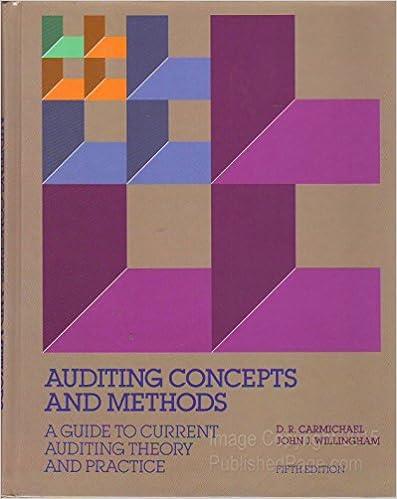Milenburg Inc., sells chemicals in large, costly returnable containers. Its procedures in accounting for the containers are
Question:
Milenburg Inc., sells chemicals in large, costly returnable containers. Its procedures in accounting for the containers are as follows:
1. When containers are purchased, their cost is charged to "Inventory-containers on hand."
2. Containers are billed to customers at cost; full credit is allowed for all containers returned in usable condition. The containers remain the property of Milenburg Inc., at all times.
3. The cost of containers billed to customers is debited to "Accounts receivable- containers" and credited to "Liability for containers billed" At the same time, the cost of the containers billed is transferred to "Inventory-containers out" from "Inventory-containers on hand." Subsidiary ledgers are maintained for "Accounts receivable-containers" and "Inventory-containers out."
4. When containers are returned in usable condition, the entries in 3 are reversed.
5. A physical inventory of containers on hand is taken at the fiscal year-end.
6. As a partial control over containers in the hands of customers, sales representatives are asked to estimate periodically the number of containers held by each customer. These estimates are checked for reasonableness against the amount shown for the customer in the "Inventory-containers out" subsidiary ledger.
7. Physical shortages, unusable returned containers, and other inventory adjustments are charged or credited to "Containers expense-net." The corresponding adjustments to "Liability for containers billed" are also charged or credited to "Containers expense-net."
8. Containers kept by customers for more than one year are deemed unusable. Wiley Norris had been the auditor of Milenburg Inc. for many years. He issued an unqualified opinion on the financial statements for the previous fiscal year. Two months before the current year-end, the company's accountant requested that he investigate a strange situation which had developed: the balance in the "Liability for containers billed" had been steadily increasing, to the point where it exceeded the combined balances in "Inventory-containers out" and "Inventory-containers on hand."
1. What errors might have caused the situation described by the company's accountant?
2. List the procedures Norris should employ to determine the nature and extent of the errors.
Step by Step Answer:

Auditing Concepts And Methods A Guide To Current Auditing Theory And Practice
ISBN: 9780070099999
5th Edition
Authors: Mcgraw-Hill





